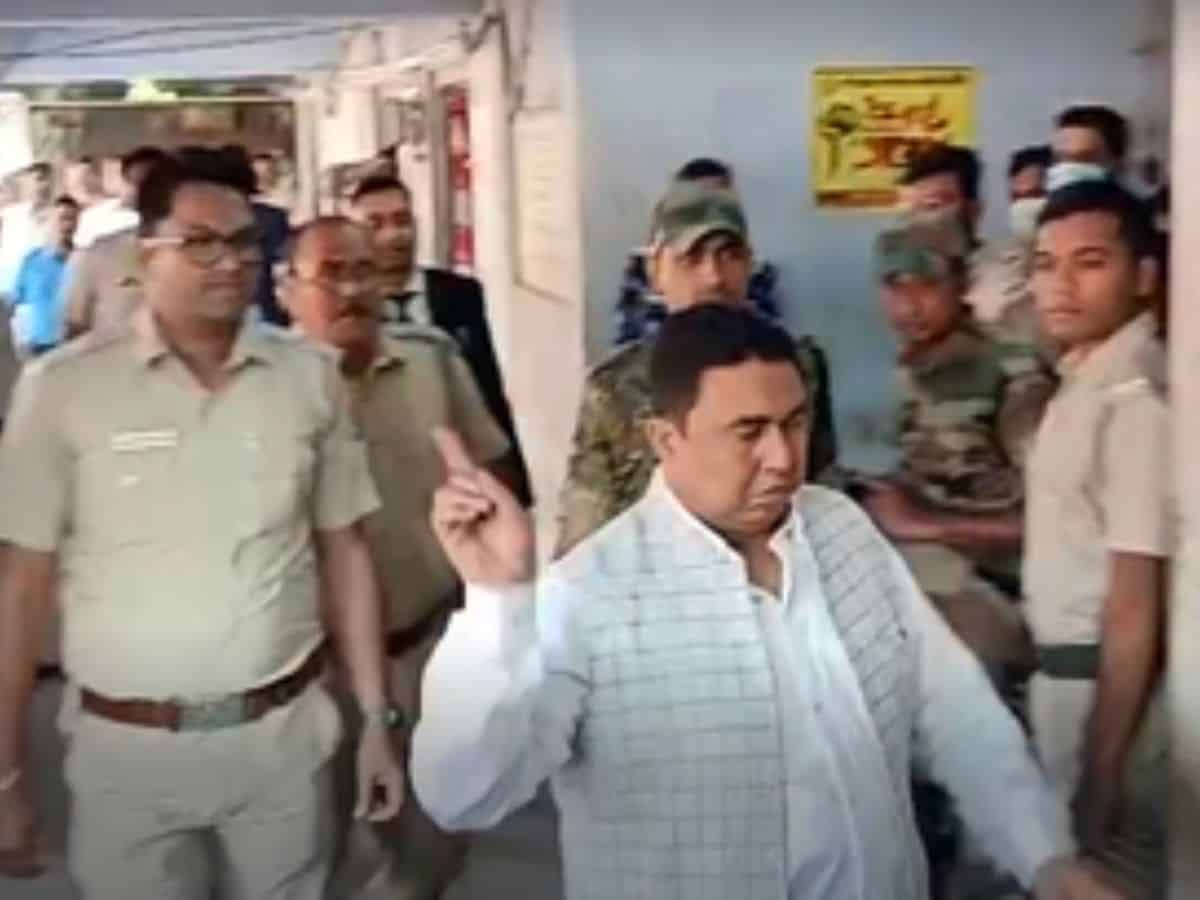
Kolkata: West Bengal Chief Minister Mamata Banerjee’s speech in the Assembly on February 15 virtually convinced the people of the state that she and her party, Trinamool Congress, will throw full weight behind the then absconding party strongman, Sheikh Shahjahan.
On that day, on the floor of the House the Chief Minister held the Enforcement Directorate (ED), whose officers along CAPF personnel were beaten up in Sandeshkhali on January 5, as responsible for the on-going tension there. She also said that the ED went to Sandeshkhali targeting Shahjahan and with the intention of creating trouble there.
From that speech, it was felt that she was trying to give the message of solidarity with Shahjahan and was trying to describe him as a “victim of circumstances”.
Party general secretary and Lok Sabha member Abhishek Banerjee also spoke on similar lines. He even questioned the ED saying that Shahjahan, as per his information, was not at the place when the attack took place.
After the two spoke on the issue, other party leaders also started issuing statements in support of Shahjahan.
However, the tone of the chief minister significantly changed on February 28 when she addressed an administrative review meeting, where she claimed that she never nurtured or supported injustice. “I do not want oppression or bloodshed anywhere. I do not indulge in injustice. If something happens beyond my knowledge I do not support that,” the Chief Minister said February 28.
On February 28 night, the state police arrested Shahjahan from an unknown location at Sandeshkhali- adjacent Minakhan, 55 days after the attack on the ED and CAPF personnel.
“Probably, the changed tone of the Chief Minister at that administrative review meeting was an indication that time is over for Shahjahan to continue enjoying the backing of the ruling dispensation and the luck-factor changed for him within just 13 days,” said sources.
Now there comes the question on why it took 13 days for the Chief Minister and the leadership of her party to change the stand on Shahjahan and suddenly he turned into a “liability” from an “asset”.
There are multiple reasons that prompted this swift change in the stand of the ruling dispensation. On February 15 when the chief minister defended Shahjahan in the House, probably her party and the administration strongly believed that the protests by the local women in Sandeshkhali against the Trinamool Congress leadership was a temporary affair and can be snubbed by describing it as “opposition-orchestrated” affair.
However, probably the ruling party and the state administration then made a mistake in understanding the pulse of the agitation by the local women which was a spontaneous gush of angst against years of oppression, violence and even sexual harassment against them. At the same time, as the momentum of the local agitation aggravated, the ruling party and the state administration made some strategic mistakes in toning down that agitation that brought the national focus on Sandeshkhali.
The first mistake was preventing the leaders of opposition parties, central commissions and central fact-finding teams from reaching Sandeshkhali, while selectively allowing certain state ministers and ruling party leaders to go there.
The second mistake was the arrest of a Bengali television channel journalist who was reporting on-ground from Sandeshkhali on flimsy grounds, which was thoroughly trashed by the Calcutta High Court.
These developments brought the focus of the entire national and to an extent international media on Sandeshkhali and to the inconvenience of the Chief Minister and Trinamool Congress the trend started of equating the movement by Sandeshkhali women with that by the farmland owners between 2007 and 2009 at Nandigram in East Midnapore district and Singur in Hooghly district, which actually gave political mileage to Trinamool Congress as the-then principal opposition party.
At that point the Chief Minister made an attempt to send a message that the Sandeshkhali developments could not be compared with Singur and Nandigram.
“Singur is Singur and Nandigram is Nandigram. The natures are different. There is a definite attempt to create a riot by comparing one with another,” the Chief Minister said.
The third and final mistake was a fragile attempt to hold the Calcutta High Court responsible for creating obstacles for the state police in arresting Shahjahan. This section of the ruling dispensation started claiming that the state police were unable to arrest Sheikh Shahjahan because of a stay on it by the Calcutta High Court.
However, on February 28 morning the Calcutta High Court Chief Justice T.S. Sivagnanam clearly said that there was no stay on the arrest of Shahjahan and any investigating agency, whether under the state government or the Union government, was empowered to arrest him.
The observation of the Chief Justice, felt by political observers, was an eye-opener for the ruling dispensation and also a realization that any further attempt to guard the absconding leader will result in a bigger political hara-kiri for them. On the February 28 afternoon, the Chief Minister changed her tone and on the same night the state police arrested Shahjahan after he remained absconding for 55 days.



